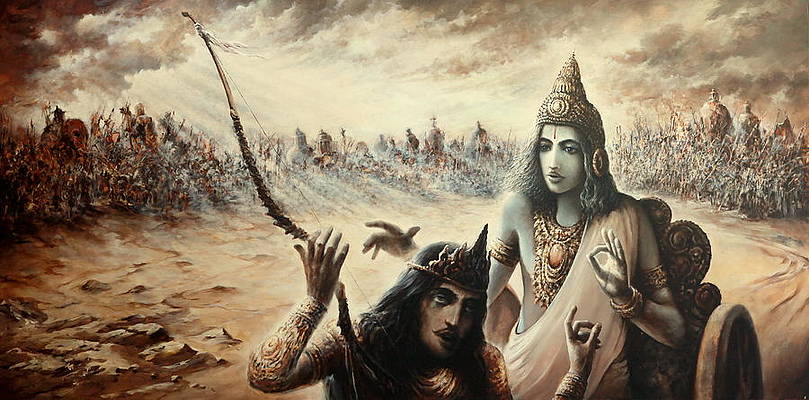“Ancient Indian theories were brilliant imaginative explanations of the
physical structure of the world, and in a large measure, agreed with the
discoveries of modern physics.”
– A.L. Basham, Australian Indologist
Your text books may credit John Dalton (1766 – 1844), an English chemist and physicist, with the development of atomic theory. However, a theory of atoms was actually formulated 2,500 years before Dalton, by an Indian sage and philosopher, known as Acharya Kanad.
Acharya Kanad was born in 600 BC in Prabhas Kshetra (near Dwaraka) in Gujarat, India. His real name was Kashyap. He was on a pilgrimage to Prayag when he saw thousands of pilgrims litter the streets with flowers and rice grains, which they offered at the temple. Kashyap, fascinated by small particles, began collecting the grains of rice. A crowd gathered around to see the strange man collecting grains from the street. Kashyap was asked why he was collecting the grains that even a beggar wouldn’t touch. He told them that individual grains in themselves may seem worthless, but a collection of some hundred grains make up a person’s meal, the collection many meals would feed an entire family and ultimately the entire mankind was made of many families, thus even a single grain of rice was as important as all the valuable riches in this world.
He said, “Every object of creation is made of atoms which in turn connect with each other to form molecules.” He found out universe is made up of “kana” means atoms. He studied atomic theory and found the way atoms move & react with each other. Thus, people began calling him ‘Acharya’ (‘the teacher’), hence the name Acharya Kanad (‘the teacher of small particles’)
Acharya Kanad founded the Vaisheshika School of Philosophy where he taught his ideas about the atom and the nature of the universe. He wrote a book on his research “Vaisheshik Darshan” and became known as “The Father of Atomic theory.” On reading these sutras we find that Kanad’s atomic theory was far more advanced than formulated later by the Greek philosophers, Democritus and Leucippus. Some scholars even go to the extent of saying that in Kanad’s lifetime itself some Greek scholars had visited India and through a debate with the great philosopher had been exposed to Indian ideas about atom, or were atleast influenced by his theories as they went on to postulate their own atomic theories.
Conception of Paramanu (the atom)
Kanad was walking with food in his hand, breaking it into small pieces when he realised that he was unable to divide the food into any further parts, it was too small. From this moment, Kanad conceptualised the idea of a particle that could not be divided any further. He called that indivisible matter Paramanu (atom). He proposed that this indivisible matter could not be sensed through any human organ or seen by the naked eye, and that an inherent urge made one Paramanu combine with another.
Kanad Sutras
- All substances, all matter that existed in the universe was formed of Paramanu (atoms). There are different types of Paramanu for the five Pancha Mahabhootas, Earth, Water, Fire, Air and Ether. Each Paramanu has a peculiar property which depends, on the substance to which it belongs.
- An object appears to be heavy under water than it does in air because the density of atoms in water is more than in air. The additional density of object, in water, Kanad said, takes on part of the weight of an object, hence we feel only a part of its total weight, while in air, the lesser density of atoms results in a lesser part of an object’s weight being picked by air, hence we feel the object to be heavier in air than what is was when under the water. Kanad thus foreshadowed Archimedes’ theory that a body immersed in a fluid is subject to an upward force equal in magnitude to the weight of the fluid it displaces.
- About his ideas on atom, Kanad observed that an inherent urge made one Paramanu combine with another. When two Paramanu belonging to one class of substance combined, a dwinuka (binary molecule) was the result. This dwinuka had properties similar to the two parents Paramanu. In the material universe, according to him, Paramanu belonging to different classes of substances combine in different combinations giving us a variety of dwinuka, which in other words means different types of substances.
Apart from such combination of different Paramanu, Kanad also put forth the idea of chemical changes occurring because of various factors. He claimed that variation in temperature could bring about such changes. He cited the examples of blackening of a new earthen pot and the ripening of fruit to illustrate the chemical change in substances brought about by the heat.





